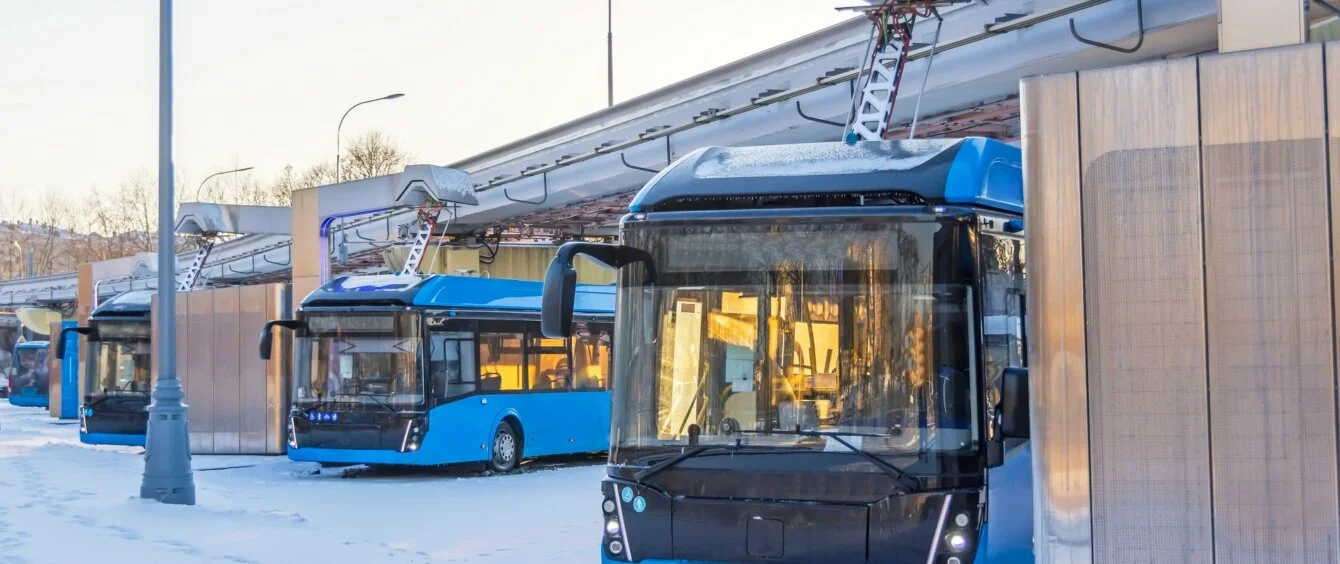EVs are experiencing a boom in sectors including local public transport. Based on figures from registration authorities, in 2021, nearly 22 percent of all registered transit busses on the European market were powered by electric or hybrid electric drive systems. But what happens once the batteries from these busses reach the end of their service life? Dutch bus manufacturer VDL Bus & Coach and energy utility RWE have joined forces to find a sustainable answer to this question. Their project, called Anubis, involves using decommissioned electric bus batteries for energy storage.
To this end, 43 end-of-life lithium-ion battery packs removed from VDL busses will be connected to each other to create a storage system on the premises of RWE’s former Moerdijk power station located in the Netherlands, south of Rotterdam. One battery pack consists of 9 batteries, each weighing around 220 kilogrammes. The bus batteries will be placed in cuboid containers, which will be connected directly to the grid via inverters and transformers. Based on their original capacity, the storage system will have a maximum capacity of 7.6 megawatt hours.
However, these battery packs have been in use since 2016, the year in which VDL commissioned the electric busses. Therefore, they no longer have their full capacity. “We expect their remaining capacity at about 80 percent,” says Karolina van Hulst, Battery Project Developer at RWE Supply & Trading and project developer lead for the project.
Second-life batteries offer multiple benefits
Through this initiative, the companies seek to gain more experience in operating second-life battery storage systems. After all, the technology that breathes a second life into propulsion batteries is promising: “In a market of scale, as is the battery storage market, second life projects enable us to make efficient use of reduced cost resources,” explains Marc Salossnick, Project Execution Manager.
As the energy transition progresses, demand for storage solutions increases constantly. Given that electricity generation from renewable energy sources such as wind and the sun is subject to natural fluctuation, there is a need for energy storage capable of balancing this. Second-life batteries might provide a particularly sustainable solution.
Extended battery usage helps to achieve CO2 savings
These types of innovative storage help reduce the carbon footprint of the batteries due to delayed recycling (when improved recycling methods are available) but most importantly, this eliminates the need to buy new batteries for the storage unit.
Karolina van Hulst translates this into numbers: “As we make longer use of existing battery packs and don’t have to purchase new batteries for the energy storage system, we achieve around 2,000 metric tons in CO2 savings.”
The Dutch government is subsidising the undertaking under the Demonstration Energy Innovation (DEI+) programme. The scheme supports concepts that contribute to sustainable energy supply and the circular economy, the latter of which is one of Anubis’ major objectives. “In this project, we are exploring how to extend the lifetime of drive batteries before they are recycled,” says Karolina van Hulst.
Anubis to produce findings regarding the technology
“In Europe, we are one of the forerunners in the field of electric public transport. Providing a sustainable circular solution for our batteries is part of our strategy. However, its application still requires a lot of new knowledge and development,” states Paul van Vuuren, CEO von VDL Bus & Coach, commenting on the backdrop to the project. The donor busses are being fitted with more powerful battery packs, but the ones they are replacing still have enough capacity for continued use.
The companies want to leverage knowledge gained from the demonstration project to build the foundation for further second-life projects of commercial scale. After all, EV expansion will probably provide large numbers of drive batteries which can be given a second life in storage systems. While VDL brings battery expertise to the table, RWE draws on its experience from other, similar projects. For example, the energy company operates a battery storage system using decommissioned EV batteries in Herdecke, Germany (as reported by the en:former).
RWE implements further innovative storage projects
“The research and development aspect of such a project is a great opportunity for us to continue to broaden our horizon for different technologies. I am very confident we can deliver a solution we can be proud of as we already have time and time again for second life projects such as the newly commissioned Herdecke II storage plant,” declares Marc Salossnick.
The second-life storage unit in Moerdijk makes sensible use of existing infrastructure, as the batteries in the containers are housed in one of the power plant’s former demi-water buildings and use existing electrical infrastructure as much as possible.
